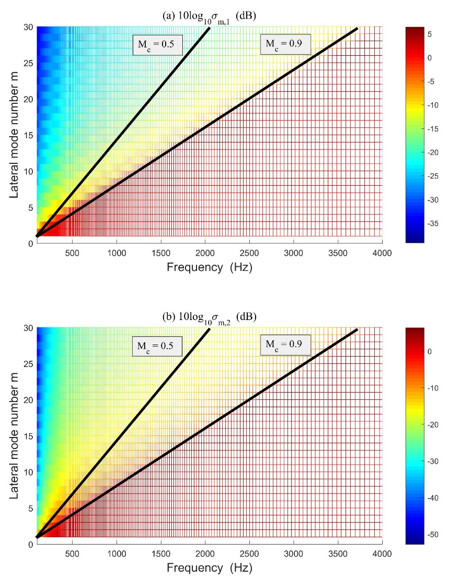Sound radiation from vibrating plates is a fundamental vibro-acoustical problem extensively investigated over many years. In this problem, an important variable to estimate is the radiation efficiency of plates, since it not only provides information on the sound power radiated from the plate but also on the vibration response of the plate.
In most relevant research, the acoustic medium surrounding the plate was considered stationary, and under this assumption, the radiation efficiency of plates under various conditions has been well investigated.
Compared with the sound radiation of plates in stationary fluid, the sound radiation of plates induced by the turbulent boundary layer could have very different behaviors. In previous research, effects of convection velocity in the turbulent boundary layer on the radiation efficiency have not been reported so far.
However, it was observed in wind tunnel test that an increase of convection velocity may increase radiated sound power and mean square velocity of plates to different levels. This phenomenon has not been explained either.
Therefore, the modal averaged radiation efficiency of a rectangular plate under the turbulent boundary layer excitation is analyzed and effects of convection velocity and structural damping on the modal averaged radiation efficiency are discussed.
Based on the Corcos model, formulae for the calculation of the modal averaged radiation efficiency are derived using the modal expansion approach by researchers from the Institute of Acoustics (IOA) of the Chinese Academy of Sciences. This research finding has been published in The Journal of the Acoustical Society of America.
Except the effect of the point autospectrum of wall pressure, the physical mechanisms demonstrate that an increase of the convection velocity will increase the number of the sub-convective modes. It results in larger radiated sound power as well as larger mean square velocity of the plate.
Below the hydrodynamic coincidence frequency, the modal averaged radiation efficiency will increase with the increase of the convection velocity. The reason is caused by the increase of the modal radiation efficiency of the coincided modes, since a higher convection velocity will coincide with lower order modes which have higher radiation efficiencies, as shown in Fig.1.
It is also found that an increase of the structural loss factor could increase the modal averaged radiation efficiency at sub-critical frequencies, and the damping effect will be enlarged with the increase of the convection velocity.
Although the discussion in this research is based on the Corcos model, it can be predicted that the conclusions are applicable for complex turbulent boundary layer models as well.

Fig.1 Hydrodynamic coincidence lines and variation of the modal radiation efficiency with the lateral mode number and the frequency of a finite aluminum plate.
(a) m varies, n=1 and (b) m varies, n=2(Image by IOA).
Reference:
KOU Yiwei, LIU Bilong, CHANG Daoqing. Radiation Efficiency of Plates Subjected to Turbulent Boundary Layer Fluctuations. The Journal of the Acoustical Society of America (Vol. 139, No.5, 2016, pp. 2766-2771). DOI: 10.1121/1.4949021
Contact:
KOU Yiwei
Key Laboratory of Noise and Vibration Research, Institute of Acoustics, Chinese Academy of Sciences, 100190 Beijing, China
Email: kouyiwei@mail.ioa.ac.cn


